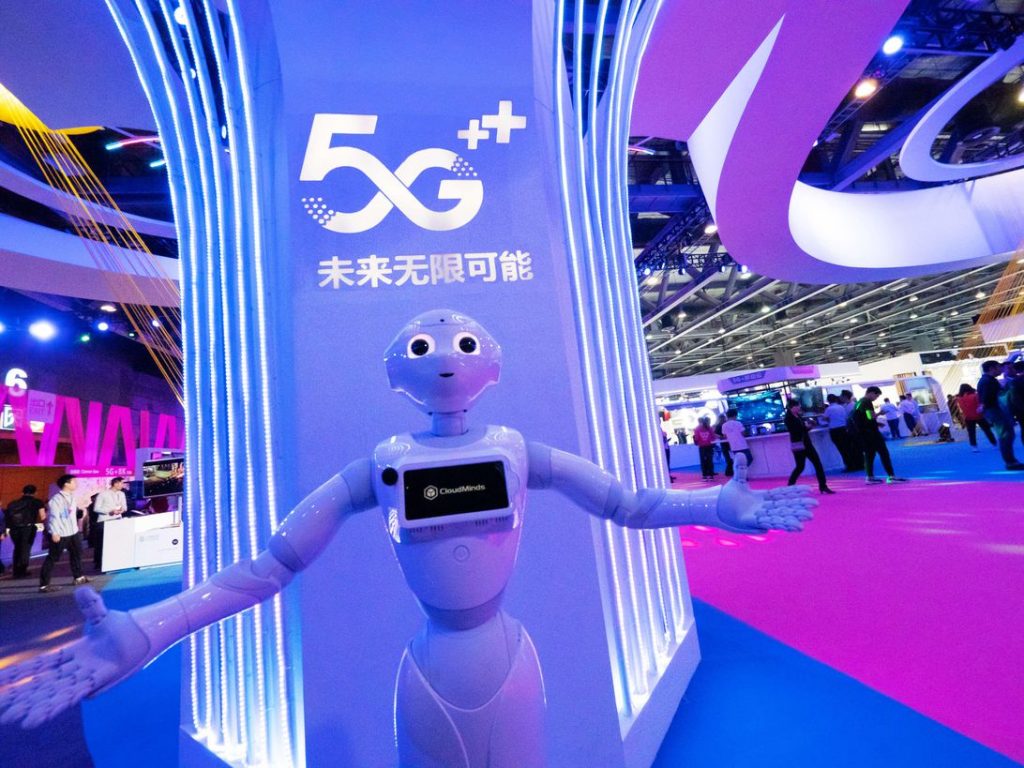5G will make robots more responsive.
Getty Images
5G’s not just for phones. Now, with Qualcomm’s new RB5 system, it’s also for robots and drones.
The San Diego mobile chipmaker on Wednesday introduced the first 5G system with hardware, software and tools for advanced robots. The Qualcomm Robotics RB5 platform uses the company’s new QRB5165 processor for robots, and it has a companion module for 4G LTE and 5G connectivity through Qualcomm’s X55 modem, which is also used in smartphones today.
The RB5 packs in artificial intelligence for manufacturers to create super smart, fast and responsive machines, and it’s designed to consume low amounts of power (relatively speaking).
Qualcomm expects new RB5-powered machines to come for the consumer, enterprise, defense, industrial and professional service sectors. At least 20 companies have gotten an early look at the technology and likely will use it. That includes LG; drone maker Skydio; security robot maker NXT Robotics; Meitun, which is working on delivery robots and drones in China; and Siasun, which is building Pongbot ping-pong robots.
And over 30 hardware and software companies are working on adjacent technology to enable various robotics applications. They include drone mapper AirMap, Ubuntu publisher Canonical, robot fleet manager InOrbit, Panasonic and Intel’s RealSense business, which makes depth and tracking cameras.
For “any kind of robot, be it a $200 [personal] robot to a $2 million industrial robot, the critical things that robot needs to do is sensing, thinking, acting and communicating,” Dev Singh, head of Qualcomm’s robotics, drones and intelligent machines business, said in an interview with CNET ahead of his company’s announcement. “Qualcomm’s processor packs all of this together.”
While most people think of 5G as a technology for smartphones, it has the potential to transform other industries even more. The wireless tech has huge implications for robots, cars, health devices, retail and nearly every industry you can think of. 5G can link street lights and other devices that haven’t been connected to the internet before, with ubiquitous sensors constantly talking to each other. Emergency responders will be able to do more on the scene of an accident, while farmers will be able to monitor their crops and livestock. Even cows could become connected.
Robotics and drones are a big opportunity for Qualcomm and 5G. There will be 60 million such machines deployed this year, according to an ABI Research report from last year, and that number should double by 2025.
Reliable and responsive
When it comes to robotics and drones, the key benefits from 5G are the wireless technology’s responsiveness and reliability. 5G latency, the amount of time it takes to get a response to information sent, is measured in less than a millisecond, compared with several milliseconds — or more, depending on the use and the network — for 4G and Wi-Fi. And 5G networks are designed to be super stable.
For advanced robots in factories and other places, the accuracy needed is so high, there can’t be any sort of hiccups in the signal. Wi-Fi won’t cut it, and neither will 4G.
“You have applications that need real time response to things … [like] remote surgeries using robots,” Singh said. “That’s only possible over 5G.”
The RB5 isn’t Qualcomm’s only chip for robots. Last year, it introduced its first processor system specifically for our future overlords, the Qualcomm Robotics RB3 Platform. The RB3 runs on 4G LTE.
Even before the RB3 hit the market, companies already used Qualcomm’s technology in their devices. Sony’s Aibo robotic dog and vacuum cleaners from iRobot and Panasonic packed in the technology. But by tailoring a processor specifically for robots and drones, Qualcomm was better able to address their particular needs. When it introduced the RB3, Qualcomm said it hoped its system would enable new robots in agriculture, consumer, delivery, inspection, service, smart manufacturing, warehousing and logistics, and other areas.
Over 100 robotics companies have been working with Qualcomm, Singh said. Even a helicopter bound for Mars uses Qualcomm’s older technology.
The new RB5 will enable even more advanced machines like automated guided vehicles, autonomous mobile robots, delivery robots and drones, collaborative robots, and machines designed for inventory and industrial uses.
“5G is going to be the underlying fabric for communication for the factories of the future,” Singh said.
The RB5 is capable of 15 Tera Operations Per Second (TOPS) of AI performance for running complex AI and deep learning tasks. The system’s QRB5165 processor includes machine learning and a dedicated computer vision engine for video analytics. The chip’s Spectra 480 image signal processor can support seven cameras at the same time and process images at 2 Gigapixels per second.
Qualcomm expects the RB5 to be in products within about six to eight months, Singh said.

